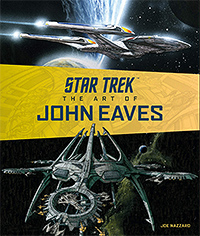The Art of John Eaves is another excellent addition to the growing list of Star Trek reference books released in the last few years by Titan Books. The oversize, hard-cover coffee table book is 208 pages long and contains literally thousands of images detailing the incredible 30-year career of prolific Star Trek artist John Eaves.
Needless to say, the book satisfies in every way. From classic renderings to never before seen images, editor Joe Nazzaro has expertly compiled Eaves’ first-person account of his entire Star Trek career, detailing his artistic process in broad strokes across hundreds of creations. (Nazarro is also the author behind 2017’s excellent Star Trek Beyond: The Makeup Artistry of Joel Harlow.)
Eaves is well known among Star Trek fans as the creator of the Sovereign-class Enterprise-E, first featured in Star Trek: First Contact, as well as the missile silo-inspired Phoenix that so memorably achieved warp speed at the conclusion of that film.
Throughout his career, which began in earnest for Star Trek back in 1988 during production of Star Trek V: The Final Frontier, he has worked on the original series films, ‘90s era Trek television, the Next Generation films, the Kelvin Timeline movies, and now Star Trek: Discovery.
His career has literally touched every incarnation of Trek from Kirk to Burnham — and with that in mind, the book is broken up into five dense, career-spanning sections from his work before joining the Star Trek family through his modern-day contributions to the franchise.
As long-time Star Trek production designer Herman Zimmerman says in the foreword, “I’m predicting that the book you are holding will amaze you.” He’s right — it did! It also educated us on quite a few amazing facts about the career of John Eaves that not everyone will know.
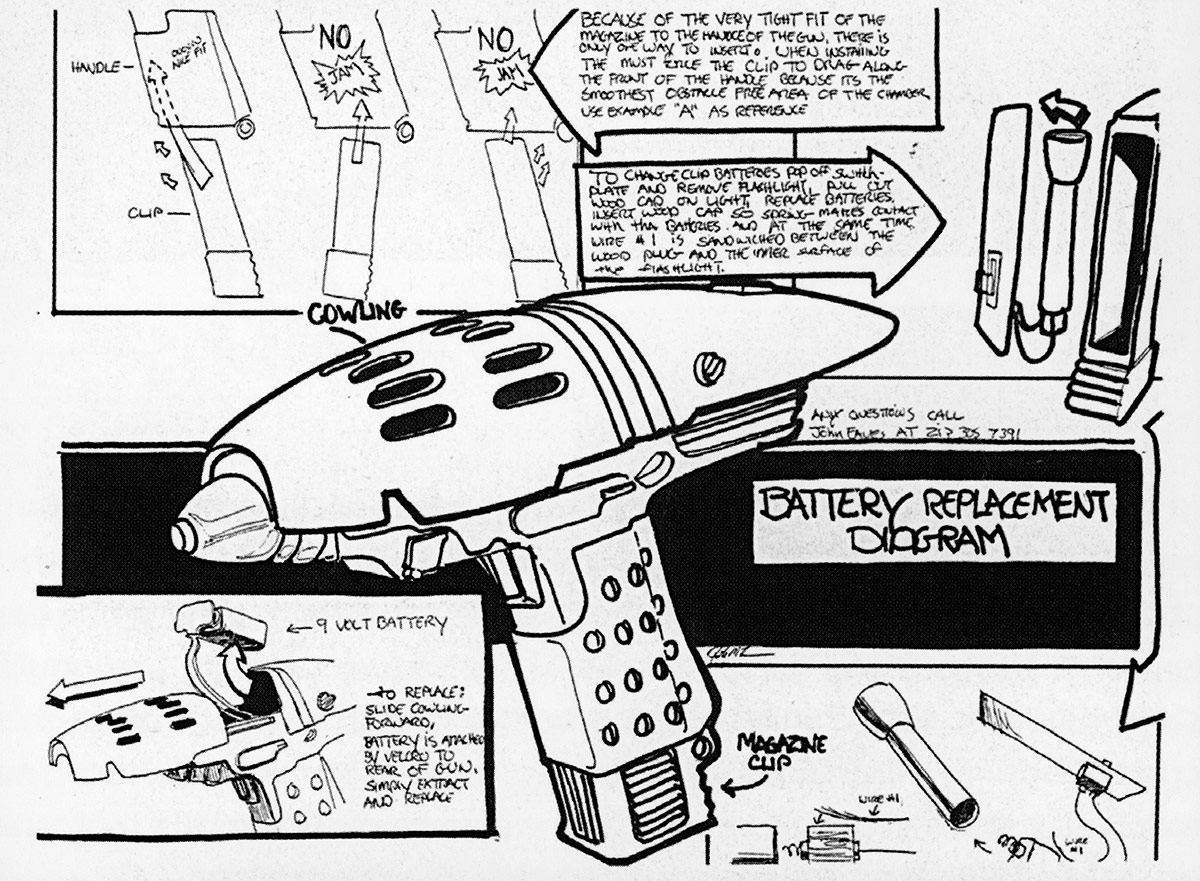
Phasers and props, not just starships: Everyone knows Eaves is one of Trek’s most popular starship designers of the past 30 years, but he’s also designed props, scenic landscapes and helped construct physical models. One of the first items created by Eaves in his illustrious career is the popular Type 2 phaser with the removable clip (first seen in Star Trek V: The Final Frontier).
When his artwork for that design was published in a sci-fi magazine, the original drawing included his phone number for the production team in case they had any questions. The designer was soon fielding numerous calls from fans with their own questions about his phaser design.
John Eaves is color blind: It seems like a story told straight out of a Star Trek parable. Young artist dreams big, finds out he is color blind, overcomes it to become one of Trek’s most celebrated creatives. Sometimes fact is stranger than fiction.
Eaves was in high school when he learned about his ailment; that was also when he learned how to work around it by just following the labels. “It was never the handicap to my work I thought it would be,” he says, adding that his co-workers, though, quickly learned to never ask him to mix their paint for them.
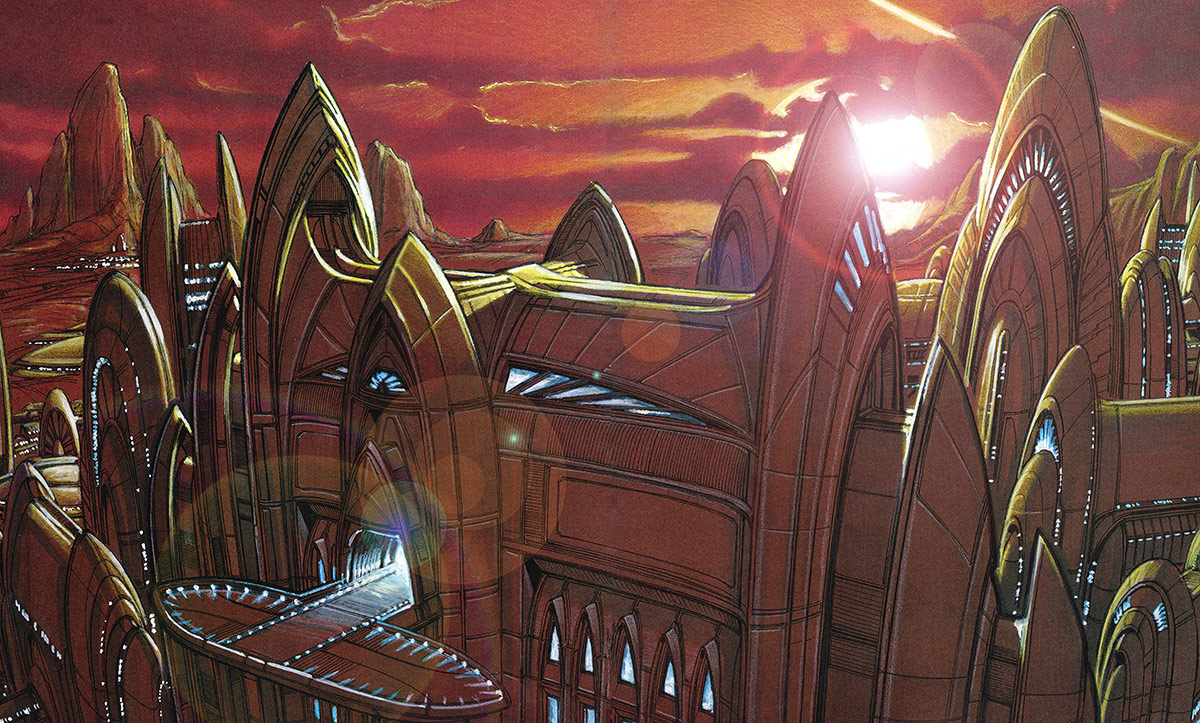
City and landscapes, too: Eaves also designed the iconic Vulcan landscapes that so impressively showcased that popular planet in the Vulcan trilogy from Star Trek: Enterprise.
Those renderings included the striking city landscape of the Vulcan High Command (with it’s distinctive landing platform that was seen similarly in Star Trek: Discovery) and the modern United Earth Embassy that is eventually damaged by an explosion in “The Forge.”
Greg Jein first hired him: Legendary Trek model maker Greg Jein, who also wrote a foreword for the book, calls John Eaves “a true trailblazer and an inspiration to new generations of industry artisans.” It was Jein who first hired Eaves to work on Star Trek, bringing him on board for Star Trek V.
Eaves had spent years as a child in Arizona studying his craft and dreaming of a job creating sci-fi art for Hollywood productions. Eaves’ story about moving back and forth between Arizona and Los Angeles, before finally establishing himself, is told in heartfelt detail in the book’s opening pages.
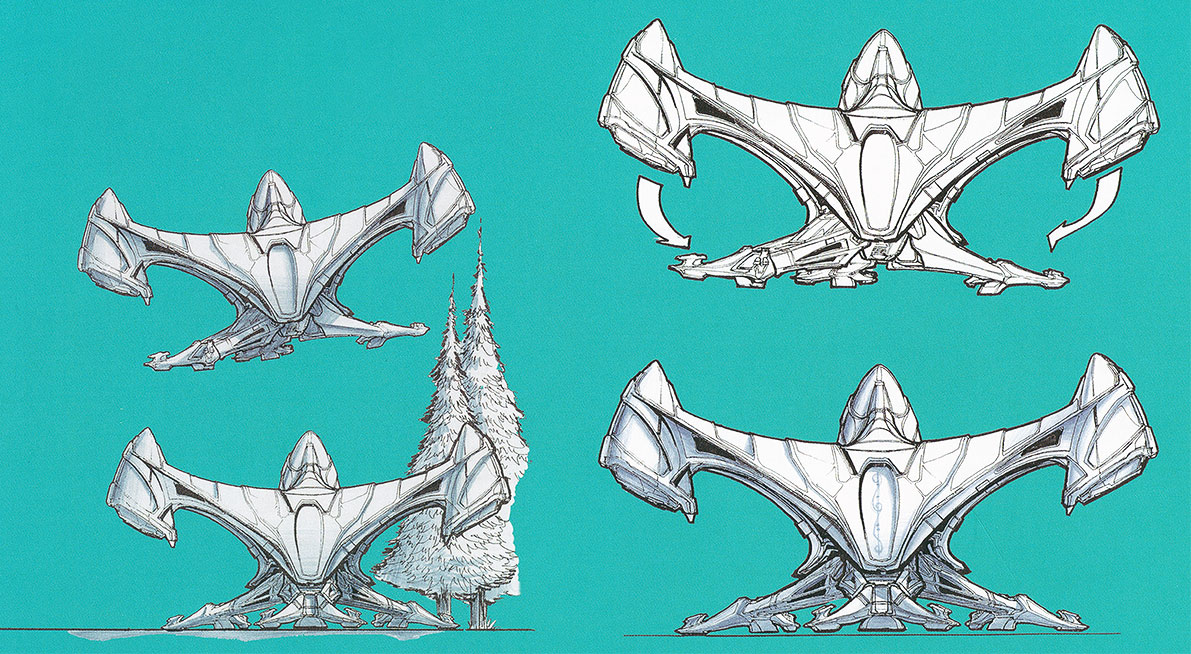
Designing the T’Plana-Hath lander: In addition to the Enterprise-E and the Phoenix that debut in Star Trek: First Contact, Eaves also was the man responsible for the unique design of the Vulcan lander T’Plana-Hath that appeared at the conclusion of the film.
As part of that design, it was Eaves who first used the stark rust-colored palette on the Vulcan ship — something that other designers would emulate moving forward in Enterprise and Discovery — and he also came up with the cool entryway design in the ship’s landing leg via a door that turns into a plank extending forward to the ground.
Inspiration from sharks to airports: Eaves details the inspirations that helped spur his love of science fiction and Hollywood storytelling to open the book.
From seeing Jaws in the theater (nudity and profanity!) to catching spaceships on TV in movies like Silent Running (domes on ships!) to spending hours at different airfields drawing planes (and gliders!), they all contributed to Eaves love of drawing and eventually to the knowledge that there were people out there whose job was to draw creatively for a living.
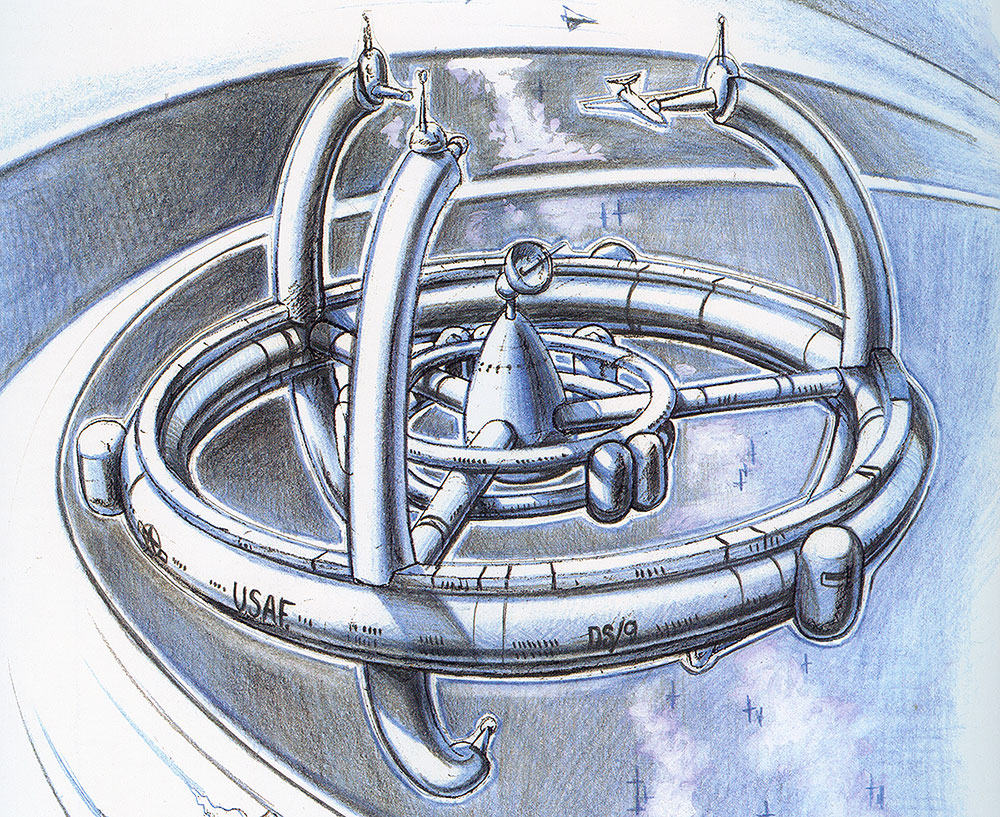
Visions of Deep Space 9 for Benny Russell: Remember those great pieces of hand-drawn posters handed out by Roy Ritterhouse in “Far Beyond the Stars” to help inspire stories?
John Eaves had a hand in finalizing the art on many of those sci-fi homages, including the classic image of Deep Space 9 re-imagined as a 1950s Air Force space station. While the idea was originally created as a CGI rendering by Jim Van Over, Eaves created the finished product that appeared in the episode.
Kelvin Timeline shuttle continuity: Eaves was basically the only creative from Trek’s ’80s and ’90s heyday to transfer into the Kelvin Timeline films as part of JJ Abrams’ production staff.
Although Eaves knew the general mandate from the films was to create a stylistic departure from the recent television series, he also knew production designer Scott Chambliss wanted to see subtle tie-ins in certain areas. As his first assignment for Star Trek ’09, Eaves designed the medical evacuation shuttle that played such a critical role in the film’s famous opening sequence.
In going through quite a few different designs, he ultimately settled on a look that tied directly to Matt Jefferies’ original design of the shuttlecraft Galileo. Eaves also designed the Enterprise shuttle seen later in the film, this one being sleeker and more in line with updated look of the new movie.
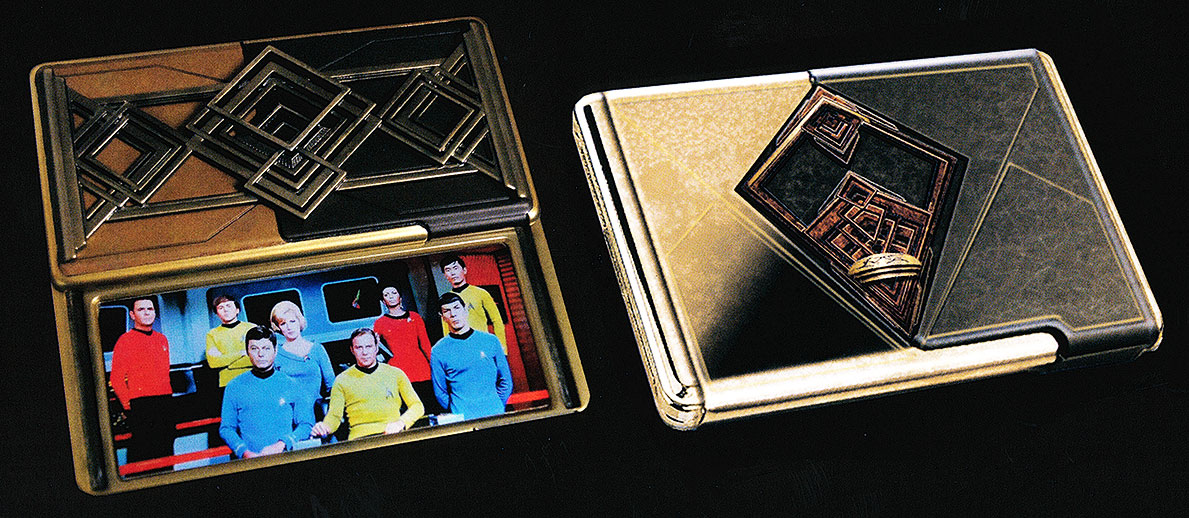
Bringing Beyond benefits: Eaves had his hand in a number of critical prop elements showcased in Star Trek Beyond. He designed Jaylah’s staff as a fighting stick that she could manipulate into any number of uses, thus showcasing her ability “to manipulate technology just like Scotty does.”
He also created several of the props seen on the old USS Franklin, including the music console that Jaylah uses a couple of times in the film. It was also Eaves who designed Spock’s Vulcan photo box that memorialized the late Leonard Nimoy so powerfully at the conclusion of the film — and gave the Shatner-era cast their cameo appearance.
Discovering a new frontier: Eaves has already designed a plethora of great ships for Trek’s latest incarnation, Star Trek: Discovery, including the titular ship itself and the immensely popular USS Shenzhou with its underside bridge — and of course, the new look of Captain Pike’s Enterprise.
In designing the Shenzhou, Eaves used a ‘blended body’ style that he learned from Tony Moore at Edwards Air Force Base, where everything smoothly transitions into itself. “So the hull blends into the wings and so forth,” said Eaves. “My hull blended with the saucer and that ended up being a nice idea that the producers really responded to. It had all the necessary elements. It still said Star Trek, but a new Star Trek.”
![]()
As Herman Zimmerman said, Star Trek: The Art of John Eaves will leave you amazed. It’s a brilliant, career-spanning collection of not only the art, but of the creative process of one of Trek’s most valued behind-the-scenes contributors.
Jim Moorhouse is the creator of TrekRanks.com and the TrekRanks Podcast. He can be found living and breathing Trek every day on Twitter at @EnterpriseExtra and @TrekRanks.

